Blood lipid profile decoding. which may affect the result. Disorders associated with "good" cholesterol
Often, doctors, in addition to standard methods of examination, prescribe to patients with complaints of heart pain, shortness of breath, instability blood pressure lipid profile - what is it? Research, or lipidogram - laboratory method diagnostics, which allows not only to identify the degree current violations fat metabolism in the body, but also to suggest the risk of developing pathology of the heart muscles, blood vessels, as well as other complications of atherosclerosis.
The diagnostic value of this laboratory analysis is extremely high: every year the number of patients suffering from ischemic heart disease and cerebral circulatory disorders is growing in the world. The cause of these diseases in 70-80% of cases is atherosclerosis - a multifactorial disorder of fat metabolism, provoking:
- deposition cholesterol plaques on the internal intima of the vessels;
- obstruction of normal blood flow;
- oxygen supply internal organs.
A lipidogram allows you to diagnose atherosclerosis or assess the risks of its development: we will discuss what it is and the cost of the procedure below.
Description of the analysis
Blood lipidogram is an advanced examination method that allows you to get a detailed picture of lipid metabolism. Although some indicators of this diagnostic test can be considered as a component biochemical analysis blood (for example, total cholesterol), a complete laboratory picture can only be obtained by a specialized study.
Conducting a lipid profile is prescribed for:
- an increase in the level of lipoproteins, determined biochemically;
- comprehensive examination patients suffering from heart disease, cerebral vessels, arterial hypertension;
- endocrine disorders;
- preventive examination of patients with an increased risk of developing myocardial infarction, cerebral stroke (for example, people with a family history of heart disease, smoking men and women over 55 years of age);
- examination of patients who have undergone an acute vascular accident;
- when prescribing lipid-lowering drugs;
- for efficiency control medical measures in all patients with atherosclerosis.
Lipidogram indicators
During the lipidogram, the concentration is determined:
- total cholesterol - OH;
- HDL - lipoproteins (lipoproteins) high density;
- LDL - low density lipoproteins (lipoproteins);
- VLDL - very low density lipoproteins (lipoproteins);
- TG - triglycerides;
- KA - .
total cholesterol
Cholesterol is a monohydric fatty alcohol, mostly synthesized in human body liver cells. Twenty percent of the substance can come with food. The substance performs many biologically important functions:
- It is part of the bioplasmic membrane of every cell human body, provides its permeability for ions, active components of the intercellular fluid.
- Makes the cell membrane stronger and more stable.
- Participates in the production of mineralocorticosteroids, glucocorticosteroids, sex hormones by adrenal cells.
- Protects erythrocytes (red blood cells) from the action of hemolytic poisons.
- It is one of the components of bile synthesis.
Since cholesterol is practically insoluble in water, it is transported in the blood by special carrier proteins - apolipoproteins. Depending on the density and saturation of apolipoproteins with fatty molecules, several fractions of cholesterol are isolated.
HDL
High-density lipoproteins (useful, “good” cholesterol) are the smallest fat particles, the size of which is only 8-11 nm (normal). Their main function is interaction with other lipoproteins and cells, collecting cholesterol, transporting it to the liver for further utilization. Thus, HDL "cleanses" the walls of blood vessels from fatty deposits, provides prevention of atherosclerosis.
LDL
(bad, "bad" cholesterol) - large fatty particles 18-26 nm in size, which are saturated with fatty alcohols, but poor in protein. With the blood flow, they are transported throughout the body and easily give lipids to neighboring cells. LDL is the most atherogenic fraction of lipoproteins. They contribute to the formation of fatty plaques on inner wall vessels.
VLDL
Very low density lipoproteins - another atherogenic class of cholesterol that transports fat molecules to peripheral organs, provoking the deposition of lipids on the surface vascular wall. VLDL are large in size - their diameter reaches 30-80 nm. In addition, this class of lipoproteins predominantly consists of triglycerides.
Triglycerides
Triglycerides - organic matter, constituting the main energy reserve of the cell. With excessive intake of them with food, triglycerides form a large number of VLDL - the main atherogenic fraction of cholesterol. A large amount of these substances is found in foods rich in animal fat: lard and fatty meat, butter, hard cheeses, egg yolk. Therefore, all patients suffering from atherosclerosis are advised to follow a plant-based diet, limiting the above meals.
Atherogenic coefficient
The atherogenic coefficient is a relative indicator that allows assessing the risk of cardiac vascular and cerebral complications of atherosclerosis in a patient with dyslipidemia. The value is calculated by the formula:
KA \u003d (X - HDL) / HDL
Thus, the ratio of "bad" and "good" cholesterol fractions is determined, which must be in constant balance to maintain the constancy of the internal environment.
Normal values
The lipid profile of a healthy person reflects a balanced ratio of all cholesterol fractions. The analysis rate is presented in the table below.
| Index | Norm (reference values), mmol/l | |
|---|---|---|
| Men | Women | |
| total cholesterol | 3,22 – 5,66 | 3,22 – 5,66 |
| HDL | 0,71 – 1,76 | 0,84 – 2,27 |
| LDL | 2,22 – 4,82 | 1,97 – 4,54 |
| VLDL | 0,26 — 1,07 | 0,26 – 1,07 |
| TG | 0,39 – 1,76 | 0,39 – 1,76 |
| Atherogenic coefficient | 2,2 – 3,5 | 2,2 – 3,5 |
Also, depending on the lipid profile, it is possible to determine the risk of developing atherosclerosis and its cardiovascular complications, so the analysis should be deciphered by a specialist.
| Risk | Lipidogram parameters, mmol/l | ||||
|---|---|---|---|---|---|
| total cholesterol | HDL | LDL | TG | Atherogenic coefficient | |
| Short | less than 5.0 | above 1.30 in men, 1.55 in women | 1,92-2,59 | less than 1.70 | 2-2,5 |
| Average | 5,10 – 6,18 | 1.10-1.30 for men, 1.20-1.50 for women | 3,37 – 4,12 | 1,70-2,20 | 2,5-4 |
| High | 6,19 – 6,22 | less than 1.10 in men, less than 1.20 in women | 4,12-4,90 | 2,35 – 5,65 | 4-7 |
| Very tall | above 6.23 | above 4.90 | above 5.65 | above 7 | |
Note! Because of the difference medical equipment used in laboratories, lipid profile norms may vary.
What are deviations from the norm
total cholesterol
This is the main indicator of the analysis on the lipid spectrum. It reflects the level of all fractions of lipoproteins and is the first step in diagnosing disorders of fat metabolism.
An increase in total cholesterol almost always indicates a high risk of developing cordially- vascular diseases. It can be provoked:
- malnutrition, the use of large amounts of animal fats;
- hypodynamia, sedentary lifestyle;
- overweight;
- hereditary predisposition, cardiovascular diseases in blood relatives;
- smoking and alcohol abuse;
- old age: starting from the age of 20, due to a slowdown in metabolism, cholesterol levels begin to rise; it reaches its maximum by the age of 70-75;
- concomitant diseases: diabetes mellitus, decreased thyroid function.
Note! Pregnancy, as well as any acute infectious or inflammatory disease can cause an increase in blood cholesterol levels. To obtain reliable results, repeat the examination 2-3 months after childbirth or recovery.
A decrease in the concentration of cholesterol in the blood serum may indicate:
- hyperthyroidism;
- liver diseases, accompanied by a violation of its synthetic activity, cirrhosis;
- fasting, strict vegetarian diet;
- malabsorption (impaired absorption nutrients intestinal cells)
- malignant form of anemia;
- sepsis, generalized infection;
- rheumatoid arthritis;
- chronic obstructive pulmonary diseases.
Only a doctor can determine the cause and consequences of abnormal cholesterol levels during integrated assessment the patient's condition.
HDL
Decreased concentration good cholesterol associated with the risk of atherosclerotic problems. It has been proven that every 0.13 mmol / l deviation from the average increases the possibility of developing coronary heart problems and acute coronary insufficiency by 25%.
Reasons for a decrease in HDL:
- chronic pathology of the kidneys and liver;
- endocrine disorders, diabetes mellitus;
- acute infections caused by viruses and bacteria.
An increase in HDL levels is said if it exceeds 2.2 mmol / l. Although high level"Good" cholesterol protects blood vessels from the formation of atherosclerotic plaques, such changes in the lipid profile are not always evaluated positively. Usually HDL increase associated with hereditary genetic abnormalities of fat metabolism.
LDL and VLDL
Doctors note a direct relationship between an increase in the concentration of LDL, VLDL and the risk of atherosclerotic plaque formation. An increase in low molecular weight fractions of cholesterol can be caused by:
- hereditary predisposition: in the group of increased attention of a person whose blood relatives suffered a heart attack, stroke or other acute vascular pathology under the age of 50 years;
- diseases of the pancreas: pancreatitis, tumors, diabetes mellitus;
- excessive consumption of animal fats with food;
- obesity;
- chronic kidney failure;
- metabolic disorders, gout;
- hormonal changes, pregnancy.
Reducing the concentration of "bad" cholesterol is rare. With a generally normal lipid profile, this reduces the risk of developing atherosclerosis.
Triglycerides
Lack of HDL, the "good" cholesterol, leads to an increase in triglycerides. In addition, an increase in the concentration of the triglyceride fraction of fats occurs when:
- arterial hypertension;
- ischemic heart disease, myocardial infarction;
- atherosclerosis;
- chronic diseases kidneys;
- thrombosis of the arteries of the brain;
- viral hepatitis B, C;
- cirrhosis of the liver;
- gout, other metabolic diseases;
- thalassemia;
- Down's disease;
- increased levels of calcium in the blood;
- chronic pancreatitis;
- alcoholism.
Triglycerides have a great influence on the formation of cholesterol plaques, the development of atherosclerosis.
A decrease in triglycerides is observed with:
- chronic obstructive pulmonary pathologies;
- cerebral infarction;
- hyperthyroidism;
- myasthenia gravis;
- burns;
- injuries;
- malnutrition.
Atherogenic coefficient
Since the coefficient of atherogenicity is relative value, evaluating the prognosis of the development of atherosclerosis and its complications, its definition is considered the most important. An increase in CA is observed with an imbalance of lipids in the body associated with an increase in the concentration of "bad" and a decrease in "good" cholesterol. The higher this indicator, the more likely acute cardiovascular and cerebral problems in the patient.
Preparation for the survey

There is no special preparation for the examination. Experts advise to observe the following rules:
- Since the analysis for the lipid spectrum is given strictly on an empty stomach, last appointment food should be about 12 hours before blood sampling (minimum 8, maximum 14). Juices, tea, coffee are also considered food, so you will have to refrain from them. At intense thirst allowed net mineral water.
- For a reliable result, you should not drastically go on a diet: eat as usual for two weeks before the examination. If on the eve of the test you have a large feast, move the trip to the laboratory for 2-3 days.
- Do not drink alcohol at least a day before the study.
- Since the level of fats in the blood is subject to fluctuations, it is advisable to donate blood for a lipid profile in the morning, from 8 to 10 hours.
- Do not smoke one hour before blood sampling.
- If possible, exclude factors that affect the result of the examination: exhausting physical activity, overwork, psycho-emotional experiences, stress.
- Before taking blood, it is recommended to take a breath and sit quietly for 10-15 minutes.
- You can not donate blood after R-examination, sigmoidoscopy, physiotherapy procedures.
- To control the treatment of atherosclerosis with the help of prescribed lipid-lowering agents, it is not necessary to stop taking the tablets.
For the study, 2-5 ml of venous blood is taken, which is centrifuged and sent to the laboratory for analysis. The result is usually prepared within a day. With diagnosed atherosclerosis, experts advise patients to donate blood for a lipid profile at least 1-2 times a year.
Thus, the lipid profile is a study that is desirable for all patients with atherosclerosis and other disorders of fat metabolism. Low invasiveness, painlessness, high efficiency and the ability to assess prognostic risks allow us to consider this laboratory analysis the main method for diagnosing dyslipidemia in humans.
Found a mistake in the text? Select it and click Ctrl+Enter and we will fix it soon!
It is believed that cardiovascular disease is one of the most common types of diseases, which are also the most dangerous. It is the leading cause of death worldwide. Currently, the most common pathologies of the heart, which are associated with changes in the walls of blood vessels - the deposition of fatty plaques. They are formed due to increased levels of lipid-like substances in the blood. Therefore, during the examination of the heart, a lipid profile analysis is prescribed.
What is a lipid profile?
This is a study that allows you to determine the level of fats in the blood, as well as a number of other important criteria. Despite the fact that in some blood tests, for example, in biochemical, there are a number of indicators that are included in the lipid profile, the importance of the latter should not be underestimated. This detailed study is highly specialized and allows you to evaluate the factors that are necessary for making such a diagnosis as atherosclerosis.
This study is necessary for the diagnosis of heart disease, diabetes, vascular problems. Also at risk are those patients who have had cases of heart attacks or strokes in the family.
 Lipidogram is recommended to be carried out regularly after twenty years, as well as:
Lipidogram is recommended to be carried out regularly after twenty years, as well as:
- with high blood cholesterol;
- after myocardial infarction, stroke, diabetes;
- if the patient is at risk: more than fifty-five years, maintaining the wrong image, metabolic disorders.
Study preparation
Cholesterol and fats (lipids) are not always harmful, they exist in the blood of a healthy person. It is these substances that form the cell walls, membranes, in the body. Moreover, lipids are one of the most important sources of energy, in this regard, during the diagnosis, not the presence of fats is detected, but their amount.
Various factors can influence the results of the analysis, therefore, it is necessary to observe certain rules before the study:

Venous blood is used for analysis. Doctors advise taking the test in the morning. Ten to fifteen minutes before blood sampling, it is recommended to relax and calm down. Eat a light dinner the night before.
The main components of lipid metabolism are cholesterol and triglycerides. Due to the fact that fats need to be transported, and proteins are used for this, both of these substances combine and form lipoproteins. During a blood test, each of the fractions is examined.
Additionally, LDLP can be determined - intermediate density lipoproteins, but this indicator is not of high significance. During the decoding of the lipidogram, risk factors are also taken into account: age, bad habits(obesity, smoking, alcoholism), predisposition to any diseases, diabetes mellitus, high blood pressure, kidney disease.
 There are some factors that can affect the result and its correctness:
There are some factors that can affect the result and its correctness:
- increased physical or emotional stress;
- drinking alcohol or smoking before taking the test;
- eating fatty foods before the study, prolonged fasting;
- pregnancy;
- diseases of the internal organs of the excretory system;
- infectious diseases, injuries, exacerbation of chronic diseases.
total cholesterol
It is considered one of the most important indicators. Cholesterol is a very important component that is necessary for cell growth, it is involved in the production of important acids in the body.
High cholesterol levels in the blood can lead to thickening of the walls of the arteries, which can lead to circulation problems. This vascular injury can lead to serious consequences, in the worst case, to a heart attack or stroke. There are two types of cholesterol: one that enters the body with fatty foods, and the other is due to the production of cholesterol in the body itself.
Feedback from our reader - Olga Ostapova
I was not used to trusting any information, but I decided to check and ordered one package. I noticed changes within a week: my heart stopped bothering me, I began to feel better, strength and energy appeared. Analyzes showed a decrease in CHOLESTEROL to NORM. Try it and you, and if anyone is interested, then below is a link to the article.
It has been proven that the development of atherosclerosis occurs more often in connection with internal cholesterol than with the consumption of fatty foods.
In the body, cholesterol is produced by the liver. An increased rate may be associated with certain diseases, for example, diabetes, kidney disease.
A special scale was created to determine cholesterol levels.
Cholesterol levels can change with age. For example, at birth, the level is less than three mmol / l. Further, the indicator increases, there may be differences between the indicators of men and women. Such differences are associated with hormonal background: male hormones increase its level, and women - reduce it. During pregnancy, cholesterol levels increase. Cholesterol levels rise with age - this is normal.
The level of the indicator is directly related to the functioning of the liver. For example, with liver diseases, a decrease in blood levels is observed. Thanks to the diet, you can significantly reduce the amount of cholesterol. It is recommended to maintain the level no more than 5 mmol / l for prevention.
Triglycerides
The increase in cholesterol and triglycerides most often occurs simultaneously, so both of these indicators should be considered together. In the case of a significant increase in only one of these indicators, the analysis is considered incorrect. Most often, this means that a person has eaten a lot of fatty foods the day before.
Triglycerides are a complex of substances that are "energy" for the whole body. For the most part, triglycerides are found in adipose tissue, they enter the body with food, and are processed in the liver.
The criteria are the following numbers.
Maximum low rates observed in the first ten years of life. The level rises with age. Elevated triglyceride levels can lead to disease of cardio-vascular system and atherosclerosis. Part of the increased rate can be combined with obesity, diabetes.
A decrease in triglyceride levels may be associated with such diseases: hyperthyroidism, malnutrition, lung disease. The level of this indicator in the blood can change with age.
In addition to the indicators described above, the results of lipoproteins are also important. They are divided into several categories depending on their association with proteins: low density, high density, very low density.
LDL
LDL is considered one of the main indicators possible development atherosclerosis. Due to their low density, with improper nutrition, they accumulate in the blood, as they do not have time to be processed. The more LDL accumulate, the more likely it is that an atherosclerotic plaque can form in their place.
You need to follow these rules.
| Norm (mmol / l) | |
|---|---|
| Men up to 1 year |
0,52-2,86 |
| Men 1 to 4 years |
0,71-2,86 |
| Men 5 to 9 years old |
1,64-2,86 |
| Men 10 years |
1,75-2,86 |
| Men 11 to 17 years old |
1,67-2,86 |
| Men over 18 years old |
1,72-3,51 |
| Women up to 1 year |
0,51-2,86 |
| Women from 1 year to 4 years |
0,71-2,86 |
| Women 5 to 9 years old |
1,64-2,86 |
| Women 10 to 18 years old |
1,77-2,86 |
| Women over 18 years old |
1,77-3,6 |
| 1,77-3,6 | |
VLDL and HDL
Many believe that VLDL as well as LDL have an impact on the development of atherosclerotic plaques. Some believe that VLDL is pathological by default, but this has not yet been proven. Anyway, increased performance indicate a violation in lipid metabolism.
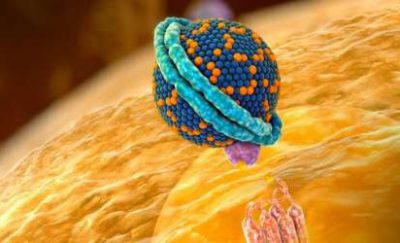 High density lipoproteins are a very important component. HDL not only does not provoke the ingress of fats into the walls of blood vessels, but also prevents this process. Lipoproteins allow you to get rid of excess cholesterol that accumulates in cells.
High density lipoproteins are a very important component. HDL not only does not provoke the ingress of fats into the walls of blood vessels, but also prevents this process. Lipoproteins allow you to get rid of excess cholesterol that accumulates in cells.
These substances deliver cholesterol to the liver, they also help turn very low density lipoproteins into low density substances - move to a higher level. Therefore, during the lipidogram, a decrease in the indicator is considered a negative sign.
The analysis norms should be determined according to the following parameters:
- the risk of developing vascular diseases is high if the results are as follows: in men - less than 1.01 mmol / l, in women - less than 1.32 mmol / l;
- the average level of development of cardiovascular diseases: in men - 1-1.35 mmol / l - men, in women - 1.31-1.52 mmol / l;
- the risk of formation of atherosclerotic plaques is not high, good indicators: 1.61 mmol/l and more.
Atherogenicity is the tendency of the body to develop fatty formations on the walls of blood vessels. This indicator allows you to summarize and draw a conclusion based on the results of the study. To calculate this coefficient, the following results are required: the level of cholesterol and high-density lipoproteins. It is believed that this indicator determines which cholesterol in the body is more: “bad” or “good”.
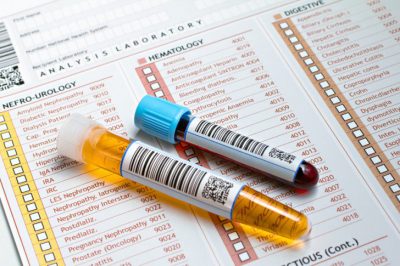 The normal level is between 2.2 and 3.5. With an increase in the value of the coefficient, we can talk about the possibility of developing atherosclerosis. The connection of this indicator for forecasting has been scientifically proven various violations. For the prevention of cardiovascular diseases, it is recommended to conduct a blood lipid profile at least once a year.
The normal level is between 2.2 and 3.5. With an increase in the value of the coefficient, we can talk about the possibility of developing atherosclerosis. The connection of this indicator for forecasting has been scientifically proven various violations. For the prevention of cardiovascular diseases, it is recommended to conduct a blood lipid profile at least once a year.
When the first signs of atherosclerosis begin to appear, it is sometimes too late, and therapy is ineffective. Therefore, annual studies help to avoid this disease. In addition to research, you need to lead a healthy and active lifestyle, eat right.
DO YOU STILL THINK IT'S IMPOSSIBLE TO FULLY HEAL?
Have you been suffering for a long time from constant headaches, migraines, severe shortness of breath at the slightest load and, in addition to all this, pronounced HYPERTENSION? Did you know that all these symptoms indicate an INCREASED level of CHOLESTEROL in your body? And all that is needed is to bring cholesterol back to normal.
Judging by the fact that you are now reading these lines, the fight against pathology is not on your side. Now answer the question: does it suit you? Can all these symptoms be tolerated? And how much money and time have you already "leaked" for ineffective treatment of SYMPTOMS, and not the disease itself? After all, it is more correct to treat not the symptoms of the disease, but the disease itself! Do you agree?
A blood test that allows you to find out in what condition on this moment there is a fat (lipid) metabolism in the body, this is the lipidogram. What is it, what is meant by this name? The lipid profile of the blood carries information about several indicators at once. It allows the doctor to assess the patient's risk of diseases such as ischemia, atherosclerosis, and the overall state of the cardiovascular system.
Lipidogram - what is it?
A medical blood test that gives an idea of the state of fat metabolism in the body, as well as the risk of damage to blood vessels and the heart, is called a lipid profile. It is a comprehensive study and carries a number of meanings:
- blood cholesterol level;
- triglycerides;
- coefficient of atherogenicity;
- HDL (high density lipoproteins);
- LDL (low density lipoprotein);
- VLDL (very low density lipoproteins).
Cholesterol
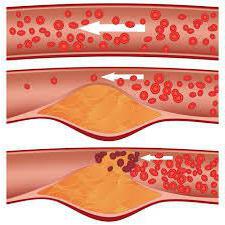
Cholesterol is the main lipid in the body. It comes to us along with animal products. His quantitative indicator is an integral marker of fat metabolism. In newborns, a minimum indicator is determined, over time it begins to grow, and already by old age reaches its maximum.
It is noteworthy that in men, the level of cholesterol in a standard situation shows a low lipid profile. The norm in women is different, and with age, cholesterol in their body accumulates much faster. good performance figures from 3.2 to 5.6 mmol / l are considered.
Many ordinary people are accustomed to believing that cholesterol is some kind of terrible phenomenon. This is a clear misconception, given that it is part of the membranes of every cell in the body. It enhances the protective properties of cells. Hormones such as testosterone, cortisol, estrogens and others are synthesized from cholesterol. Without bile acids, digestion is impossible, it is from cholesterol that they are formed. So what are the negative opinions about? FROM increased level cholesterol, when a lipidogram was performed (decoding in adults showed high cholesterol), and there were risks of developing cardiovascular diseases. Many fear this, and the very word "cholesterol" is associated with the disease.
Deciphering a blood test
For people who already have lipid disorders, the target is 1.8 mmol/L. It is achieved as a result of changes in the diet, the introduction physical activity, drug therapy. Cardiologist or therapist prescribes proper treatment. If the decoding of the blood lipid profile shows cholesterol from 5.2 to 6.2, this is a moderate risk of developing atherosclerosis, with a figure of 6.2 and above, the level is high. Let's deal with other lipidogram indicators.
- LDL. This complex delivers cholesterol to tissues. An indicator that determines atherogenicity. Commonly referred to as "bad" cholesterol. It quickly attaches to the walls of blood vessels that are altered by any pathologies.
- VLDL. Lipoproteins related to "bad" cholesterol. However, they do not play a role in the development of atherosclerosis. They have only a transport value, being synthesized in the liver.
- HDL. In other words, “good” cholesterol. Its concentration to a high degree reduces the risk of developing cardiovascular diseases and atherosclerosis.
- Triglycerides. Lipids that carry structural and energy functions. They are found in the blood of all people.

Atherogenic coefficient (KA)
The ratio of "good" and "bad" cholesterol also includes a lipid profile. Deciphering in adults (the norm is indicated below) gives an idea of the degrees of risk of developing atherosclerosis. The atherogenic coefficient is calculated as follows: the difference between cholesterol and LDL is taken and divided by HDL.
It is deciphered by the indicator:
Less than 3 is the risk of developing atherosclerosis, as well as its further unpleasant consequences minimum.
From 3 to 4 - unfavorable prognosis. The risk is moderate. You need to adjust your lifestyle and diet.
4 and above. Identified violations of lipid metabolism, and the process is already chronic, which requires treatment. High risk of stroke, heart attack.
Delivery of analysis. Lipidogram - interpretation in adults, norm
Before the study, you need to properly prepare. Before analyzing the lipid profile for three days, it is necessary to exclude animal fats, alcohol from the diet, avoid emotional stress and physical exertion. Before the study, dinner should be as light as possible. In the morning, do not drink anything (except water), do not eat, do not use toothpaste, chewing gum under no circumstances should you smoke. It is very important to remain completely calm. The interpretation of lipidogram results depends on age and gender. Children have different indicators.
Consider the assessment of the lipidogram result in adults:
Why is this analysis carried out?
So, it became clear, lipidogram - what it is. Why is such a study carried out?
Lipidogram first of all makes it possible to assess the risk of cardiovascular disease.
The analysis is used to monitor the state of the body during treatment for atherosclerosis, coronary artery disease, hypertension, kidney disease and diabetes.
An analysis for a lipid profile must be taken regularly if one of the relatives suffered from hypercholesterolemia, there were cases of strokes, heart attacks. This will help prevent the development of such health problems.
Lipidogram allows you to control your body during a lipid-lowering diet, as well as during treatment.
![]()
Who needs analysis
Lipidogram (the norm is indicated in the table in the article), regardless of age, is shown to those categories of people who have:
Body mass index is over 25;
There is an increase in blood pressure;
Diabetes mellitus (high blood glucose levels);
Waist circumference in women is more than 80 cm, in men - more than 94 cm;
There are diseases of the liver, kidneys, thyroid gland;
Close relatives had high cholesterol and died before the age of 50 from a stroke or heart attack;
There is autoimmune diseases(rheumatism, lupus erythematosus and others);
Pregnancy;
There were attacks of stroke, heart attack, chest pain;
Men aged 40 and over;
Women aged 50 and over.
Also, a lipid profile is prescribed if treatment with anticholesterol drugs is carried out to assess their effectiveness.
The results of the lipid profile are interpreted by the therapist, if necessary, prescribe treatment.
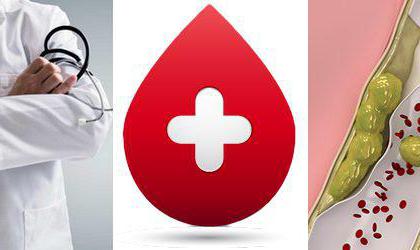
Hypercholesterolemia
If the lipid profile exceeds the norm, then the doctor diagnoses "hypercholesterolemia". This is a pathological disorder in lipid metabolism, as such it is not a disease. This is a kind of matrix for the development of atherosclerosis and heart damage. There are two types of pathology:
Congenital (primary). This hereditary disease is associated with a defect in the gene that is responsible for normal cholesterol.
The secondary form is associated with the following:
Diabetes. Due to the increase in glucose, the blood thickens, and this contributes to the formation of atherosclerotic plaques. The breakdown and synthesis of fats are disturbed. There are many fatty acids in the blood.
Reduced basal metabolism - hypothyroidism.
In diseases of the liver and biliary tract, they are formed in gallbladder cholesterol stones.
Exposure to certain medicinal diuretics, immunosuppressants, and beta-blockers.
Nutrition also affects - an excess of carbohydrates, the abuse of fried and fatty foods.
How to improve performance? diet

You do not need to look for spells and magic potions so that your lipid profile returns to normal. Price for the right products nutrition and attendance at the sports complex will be significantly lower than if you have to treat your "bad" cholesterol and its negative consequences. The old phrase "We are what we eat" comes to mind. Limit primarily the use of fried foods, pastries, animal fats, sweets, salty foods. Include more fiber in your diet (legumes, vegetables, cereals, fruits), these foods take excess bile from the intestines and prevent it from entering the bloodstream. As you know, bile is the “daughter of cholesterol”. Eat more often, but in small portions. So it will start in the body correct exchange substances, excess weight will go away, cholesterol levels will decrease.
Healthy lifestyle
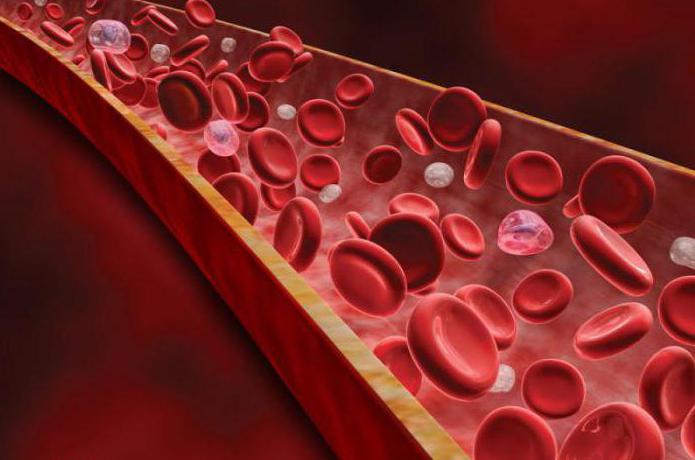
Now we know lipidogram - what it is. We are starting to bring her performance back to normal.
When it comes to physical activity, start small - daily hiking over short distances. Then you can move on to Nordic walking with sticks, this will train the whole body. Very useful cycling and swimming.
Perform workouts at home, do not forget about yoga, it strengthens not only the body, but also has a beneficial effect on the psyche. Move more, whether it's cleaning the house, dancing, working on the site. Proper nutrition in tandem with sports effectively reduces weight.
Fight stress.
Smile more often, no matter what.
Listen to your favorite music, meditate, read interesting books.
Throw out negative emotions.
Do what you love (everyone has their own).
Communicate with relatives and friends.
Get rid of bad habits.
Change the environment if you feel uncomfortable.
Stick to our advice. Change your lifestyle, diet, and you will see how in better side health will begin to change. All indicators of your lipid profile will return to normal.
Cardiac and vascular diseases are the most common today. The reason is a change in fat metabolism and atherosclerosis, which affects the walls of blood vessels. The assessment of the risk of atherosclerosis is determined by laboratory tests, including a lipid profile. What is the norm for women possible deviations this analysis will show.
The presence of cholesterol and other lipids in circulatory system healthy body considered normal. Thanks to fat-like substances, the structure of the cell membranes of all cells occurs. In addition, with is bleeding transportation of fats to tissues from the intestines, as well as from the body's stores to the site of their use.
As you know, lipids are an efficient source of energy. Therefore, in the diagnosis, it is important not to identify lipids, but to determine their overestimated rate compared to the permissible norm. However, this level can be subject to significant fluctuations due to the influence of various internal and external factors.
Because of these factors, in order to reflect a more accurate picture of the lipid index, before taking the analysis, you need to follow the recommendations:
- Exclude before analysis the consumption of food, especially fatty. Eat as normal, but avoid evening meals.
- Before the study, there is no need to physically and emotionally overload, since these phenomena can cause the mobilization of the body's savings and affect the outcome of the analysis.
- Do not smoke before the examination: this leads to an increase in the fat index in the blood, which distorts the diagnostic environment.
- If the patient takes any medication all the time, the doctor should be told about this moment. Some anti-inflammatory drugs, beta-blockers, hormonal drugs effectively affect the lipid and cholesterol index.
The index of total cholesterol during therapy with beta-blockers becomes higher. They are often prescribed for pathology of the heart and blood vessels, which gives rise to a lipid profile.
A decrease in cholesterol levels is observed in people who take lipid-lowering drugs, estrogens, androgens. Taking corticosteroid and sex hormones increases not only cholesterol, but LDL and HDL. Contraceptives lead to an increase in cholesterol, LDL and lower HDL.
The possibility of various drugs to influence the parameters of the survey obliges both to take this into account when deciphering the analysis, and to carefully monitor patients using these medications. Such people may face the threat of increased development of pathology of the heart and blood vessels.
A blood test to detect the lipid spectrum is recommended to be taken on an empty stomach in the morning. The last food intake should be at least 12 hours before. 30 minutes before the examination, do not overstrain physically and emotionally.
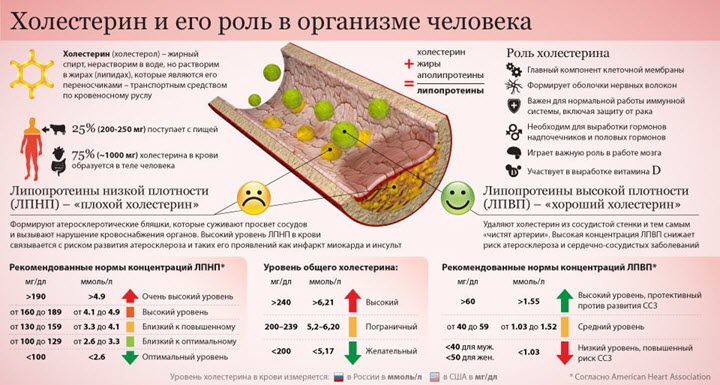
The outcome of the study may be influenced by:
- injury;
- physical work;
- consumption of food, alcohol, smoking shortly before sampling;
- diet starvation, impotence;
- concomitant ailments with damage to the kidneys, liver;
- period of pregnancy.
When the analysis is passed, important lipidogram norms are identified and explained.
Indications for a lipid profile
The analysis of blood lipids is not only in detecting the threat of cardiac and vascular pathologies, but also in evaluating the effectiveness of therapy with an already diagnosed diagnosis (diabetes, hypertension, ischemia). The study is important for the dynamic control of patients who are on a lipid-lowering diet and use cholesterol-lowering drugs.
Lipidogram is carried out in a number of such cases:
- as a prophylaxis once every 5 years for people over 20 years old;
- increase general rule cholesterol in a biochemical blood test;
- the presence of impaired cholesterol saturation earlier;
- hereditary predisposition to an unfavorable course - the presence of a severe form of atherosclerosis in relatives, disorders with metabolic processes;
- risk factors: diabetes, overweight, smoking, hypertension, age category people 45 - 55;
- period of pregnancy;
- the presence of painful attacks behind the chest, strokes, heart attacks;
- ongoing therapy with lipid-lowering agents, prescription of a special diet food(monitoring efficiency).
Often, the results of the examination are interpreted by the therapist, who also prescribes the treatment.

Components of the lipid spectrum
The main index in the lipid profile is total cholesterol, which can be:
- endogenous - generalized by the body most often in liver cells;
- exogenous - getting outside, often with food.
It also takes part in the development of all cell membrane tissues, favors the absorption of nutrients, acts as a precursor of growth hormone, and is responsible for the sexual and general development of the body.
The established norm for people suffering from changes in lipid metabolism is 1.8 mmol / l. This is realized by changing food addictions, connecting physical loads to life, eliminating bad habits, taking drugs.
At a cholesterol level of 5.2 - 6.2, the risk of developing atherosclerosis is moderate, if more than 6.2 - the risk is overestimated.
The blood lipid spectrum includes 5 indicators.
High density lipoproteins - HDL
They are an anti-atherogenic factor. The main goal is to transport free cholesterol from cells.
HDL exposes cholesterol to liver cells. Then, if the fat metabolism is normal, it is excreted from the body with the help of fatty acids.
This indicator refers to good cholesterol. With its high concentration, the threat of the formation of atherosclerosis and diseases of the heart and blood vessels is greatly reduced.
Low density lipoproteins - LDL
This indicator is considered bad cholesterol. Even if total cholesterol is at a normal level, high LDL indicates a change in fat metabolism and the threat of atherosclerosis. This process occurs due to the ability of this type of lipoprotein to remain on the walls of blood vessels, resulting in the formation of plaques.
LDL in blood plasma in the structure of cholesterol is about 65%.

Lipoproteins with strongly reduced density– VLDL
They belong to the category of bad cholesterol. However, their influence on the occurrence of atherosclerosis is insignificant. They carry out more of a transport function and are summarized in the liver.
This indicator is important for a rare form of dyslipidemia or for the replacement of LDL, if the study is carried out without abstinence from eating.
Triglycerides - TG
They are present in small amounts in plasma. Most often accumulate in fatty tissues and are considered a combination of glycerol and fatty acid ester.
The main principle is energy. In the circulatory system, triglycerides are present in the structure of VLDL, and then converted into LDL. Therefore, this index should be monitored.
Atherogenic coefficient - KA
Provides a combination of good and bad cholesterol. This ratio more accurately indicates the risk of atherosclerosis. Calculate it by subtracting the difference between HDL and cholesterol divided by HDL.
Research results
Deciphering the lipidogram, the doctor initially makes an assessment for the presence of deviations in the numbers of individual coefficients. Raise normal indicators Cholesterol, LDL, VLDL, TG indicates an increased risk of atherosclerosis. Pathology is when the atherogenic index is greater than 3 and the presence of high density lipoproteins is reduced.
For lipoproteins that have a high density, various typical indices are calculated. In the case of an overestimated admissibility of atherosclerosis and pathology with the heart, blood vessels in women, an HDL of at least 1.3 is indicated. Low threat if HDL is above 1.55 mmol/L.
The coefficient of atherogenicity is deciphered as follows.
KA<3, тогда высокое содержание антиатерогенных групп – угроза возникновения атеросклероза минимальная.
KA 3 - 4 - there is a possibility of the formation of atherosclerosis and heart disease.
KA>5 - a high probability of illness, which contributes to an increase in diseases of the vessels, heart, brain, kidneys, limbs.

positive lipid profile considered if there is an increase in its atherogenic indices. It is seen in various diseases.
- Genetic types of dis- and hyperlipidemias.
- Cardiac ischemia in atherosclerotic disorders of the coronary arteries.
- Different types of hepatitis, cirrhosis of the liver.
- Diseases of the urinary organs.
- Decreased production of thyroid hormones.
- Diseases of the pancreas.
- Excess body weight.
An increase in cholesterol can be observed during the bearing of a child at a physiological level.
The decrease in cholesterol and its groups occurs due to:
- low-quality formations;
- lung diseases;
- thyrotoxicosis;
- viral diseases, sepsis;
- burn pathologies;
- fasting.
High-density blood lipids are most often reduced in diseases such as:
- ischemia;
- heart attack;
- diabetes;
- atherosclerosis;
- stomach ulcer.
The coefficient of fat metabolism is significantly affected by the consumed products. Even in the absence of atherosclerosis, disturbances in the lipid spectrum already lead to the threat of diseases with the heart and blood vessels. With the abuse of quickly digestible carbohydrates, animal fats, fatty and fried foods, alcohol, there is an unnecessary addition of cholesterol, which the body is not able to metabolize. After a while, the increasing saturation of its derivatives settles in the layers of vessels.
When the doctor notices increased cholesterol in a biochemical study, then he will send the patient to examine the lipid profile in order to rule out metabolic changes. With a normal cholesterol index, patients should also be examined. This is necessary if they are prone to exposure to risk factors.
Diseases of the heart and blood vessels are widespread among people of all ages. In this regard, research is constantly being conducted on the possibilities of their prevention and treatment. Prevention of cardiovascular diseases is closely related to the search for and eradication of risk factors, the most important of which is to maintain normal level lipids in the blood, which include triglycerides, cholesterol, low and high density lipoproteins, as well as a number of apolipoproteins. The blood lipid profile includes all these tests, making it easier to select and interpret the study.
Cholesterol is a lipoprotein, and in the human body is present in the blood and in cell membranes.
Deciphering the lipid profile obtained as a result of a blood test is the task of only the attending physician. Do not engage in independent interpretation of the data.
What determines a lipid profile?
Conducting this laboratory research, aims to identify several parameters of lipid metabolism, which will be described in more detail below:
- Cholesterol is the most important component of cell membranes, obtained by the body, both from food and as a result of internal synthesis in the liver tissue.
- High-density lipoproteins (HDL, or the "good" form of cholesterol) are a complex compound of proteins and fats used to transport lipids from peripheral vessels and tissues to the liver. HDL prevent the formation of atherosclerotic plaques in the vascular bed.
- Low and very low density lipoproteins (LDL and VLDL, or "bad" cholesterol) are complexes of proteins and fats that transport lipids to the organs and tissues of our body. As a rule, they are responsible for the formation of atherosclerosis in the vessels, due to the delivery of a large amount of cholesterol and other lipids there. However, they also have healthy people with normal vessels.
- Triglycerides are the main source of energy in our body. They are predominantly found in adipose tissue.
- The coefficient of atherogenicity (CA) is a calculated indicator showing the characteristics of lipid metabolism in the blood. It reflects the ratio of factors preventing atherosclerosis to factors contributing to vascular damage.
- Apolipoproteins A1 and B are components of HDL and LDL, respectively. Their amount in the blood on a lipid profile can reveal a violation of the lipid content at a time when other indicators are within the normal range.
Many people are interested in the question of how to decipher a lipid profile? For this, there are specially defined norm indicators for different ages. However, only the attending physician should interpret the results and draw conclusions about the need for treatment.
Indications for carrying out
There are specially selected indications for the study of blood lipids in adults. These include:
- Overweight, obesity.
- Age over fifty years.
- The presence of diseases of the cardiovascular system (myocardial infarction, stroke, ischemia lower extremities) from close relatives.
- Transferred diseases of the heart and blood vessels with ischemic origin.
- The presence of risk factors for these diseases: smoking, sedentary lifestyle, alcohol abuse, etc.
- Preventive medical examinations.
- Control of lipid-lowering drug therapy.
What is a lipid profile? it good method control and assessment of the amount of fat in the patient's blood, allowing to assess the dynamics of the development of the disease, the effectiveness of treatment and identify risk factors for cardiovascular disease.
Preparation and conduct of the study
In order to obtain accurate lipidogram results, the patient must adhere to a series of simple recommendations in preparation for the study:
- Blood donation takes place in the morning, on an empty stomach;
- During the previous day, you can not engage in sports exercises and any excessive physical activity;
- In the two days preceding the analysis, you can not drink alcoholic drinks and eat spicy, heavy, fatty foods;
- Eating should be no closer than 8 hours to blood donation;
- Smoking should be avoided and stressful situations throughout the previous day.
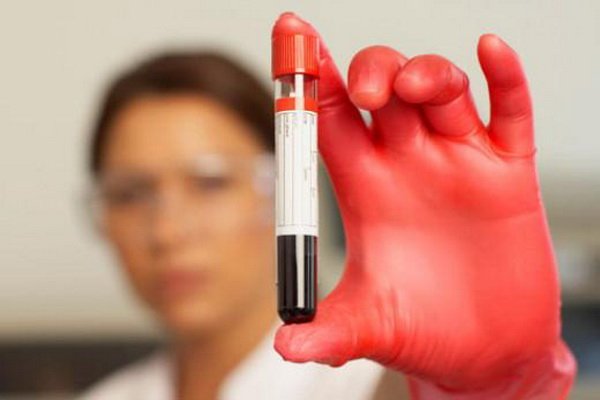
To determine the lipid profile, blood from a vein taken in the morning on an empty stomach is used.
Compliance with these requirements allows you to get a true, detailed picture of the patient's lipid metabolism. In modern laboratories, studies are usually carried out on special hematological analyzers, which allow minimizing the number of errors and speeding up the entire procedure.
Deciphering the results
The main lipids in blood plasma are cholesterol and triglycerides, which are of great importance in metabolic processes and contained in the body is normal. However, all lipids are insoluble in water, therefore, for their transportation through the bloodstream, protein complexes are used - lipoproteins of various densities. They are involved in the process of lipid transport.
The interpretation of the data obtained as a result of determining the lipid profile depends on the age of the patient and his gender. Therefore, each of its components must be considered separately, depending on these parameters.
Cholesterol, LDL and HDL
A key component of cell membranes, which determines their stability and the ability of cells to perform their functions. Over the past decades, a large amount of scientific material has been accumulated confirming the participation of cholesterol in the occurrence of diseases of the cardiovascular system (atherosclerosis of any localization, ischemic disease hearts, etc.). At the same time, the most important source of excess cholesterol is an unhealthy diet with a lot of fat. In addition, the diseases themselves can increase its amount, which is observed in diabetes mellitus or chronic insufficiency kidney function.
Low and high density lipoproteins are the most important "regulators" of lipid metabolism. It is their content in the blood that affects the risk of developing diseases of the heart and blood vessels. LDL transports cholesterol fatty acid and other lipids from the liver, where they are synthesized, to peripheral tissues. It is there that they can be deposited in the walls of blood vessels, causing and maintaining the atherosclerotic process and causing the appearance of diseases such as coronary heart disease, stroke, Leriche's syndrome, etc.
HDL act the other way around - they transport fats from blood vessels and organs to the liver, thereby clearing the walls of blood vessels from accumulated lipids. It is believed that HDL main factor in the fight against atherosclerosis.
Depending on the age of patients, the following indicators of the norm of cholesterol and lipoproteins of various densities are distinguished:
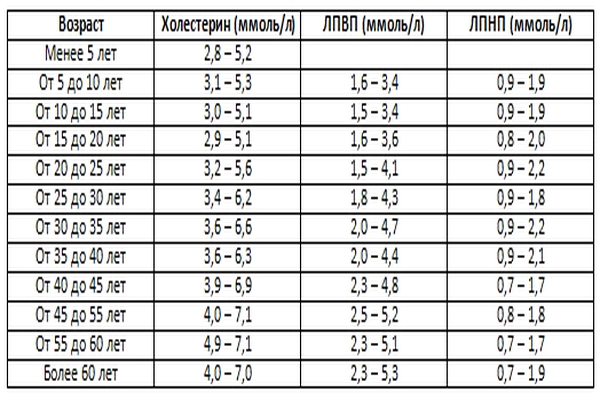
At the same time, indicators of cholesterol metabolism in women are always at lower bounds of these norms, which is associated with the "protective" effect of female sex hormones on lipid metabolism. In the table, we see that increasing age also leads to an increase in cholesterol and LDL levels in the blood.
When interpreting the results, it is very important to choose the right indicators of the norm depending on the age and gender of the patient.
Triglycerides
Triglyceride levels are closely related to cholesterol levels. This class of fats is the energy depot of our body and accumulates in adipose tissue. However, the released fatty acids can also take part in pathological processes, so the definition of triglycerides is included in the lipid profile.
Triglycerides, as well as cholesterol, are transported in the bloodstream as part of lipoproteins of different densities. The fluctuations of this lipid are very dependent on the patient's food intake, and therefore, it is important to follow the above recommendations on preparing for blood donation. Otherwise, the data obtained will not correspond to reality and will not have any clinical significance for the prevention, diagnosis or treatment of the disease.
| Age in years | Male gender | Female |
| 0 to 10 | 0,4 – 1,1 | 0,4 – 1,2 |
| 11– 15 | 0,4 – 1,4 | 0,4 – 1,5 |
| 16– 20 | 0,45 – 1,8 | 0,4 – 1,5 |
| 21– 25 | 0,5 – 2,3 | 0,4 – 1,5 |
| 26– 30 | 0,5 – 2,8 | 0,4 – 1,65 |
| 31– 35 | 0,55 — 3,0 | 0,4 – 1,65 |
| 36– 40 | 0,6 — 3,6 | 0,45 – 1,7 |
| 41– 45 | 0,6 — 3,6 | 0,45 – 2,0 |
| 46– 50 | 0,65 — 3,7 | 0,5 – 2,2 |
| 51– 55 | 0,68 — 3,6 | 0,5 – 2,4 |
| 56– 60 | 0,7 — 3,2 | 0,55 – 2,6 |
| 61– 65 | 0,7 — 3,3 | 0,6 – 2,7 |
| 66– 70 | 0,6 – 3,0 | 0,7 – 2,7 |
Indicators of the norm of triglycerides also depend on the content of sex hormones, in particular, estrogens. Therefore, their number is lower in females.
Atherogenic coefficient
This indicator is not determined directly when conducting a biochemical blood test. Its calculation is based on the use of a special formula:
Atherogenic coefficient \u003d (Total cholesterol - HDL) / HDL
The values of this coefficient are used to assess the risk of developing diseases of the cardiovascular system and to interpret the content of fat metabolism indicators in the lipid profile.
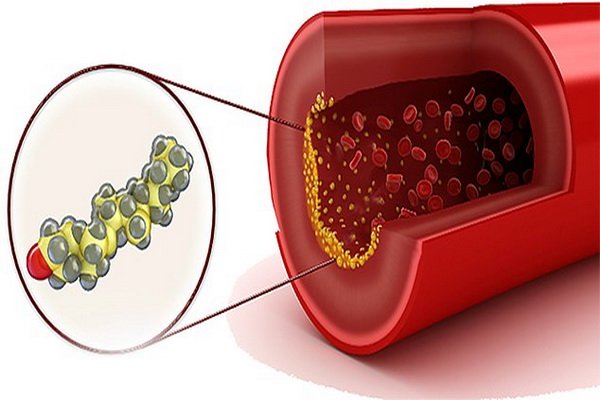
An important diagnostic criterion for the risk of developing atherosclerosis is an increase in the LDL fraction, which is called atherogenic, that is, contributing to the development of atherosclerosis.
Normally, the value of this parameter should be from 2.5 to 3.5. If the coefficient is exceeded, it means that the body contains a large amount of "bad" lipids - cholesterol and LDL. This is one of the key parameters of the lipid profile.
Apolipoproteins
Apolipoprotein A1 - is part of HDL and is a linking component between individual lipid molecules. It is this protein that determines the anti-atherogenic effect of HDL on blood vessels.
Apolipoprotein A1 binds "bad", peripheral cholesterol and carries it to the liver.
Apolipoprotein B, in turn, on the contrary, is a structural component of LDL and VLDL, causing their atherogenic effect.
Normally, between these two proteins, as well as between HDL and LDL, there should be a balance that allows maintaining lipid metabolism at a normal level.
So, what is a lipidogram? it complex method biochemical assessment of the lipid content in the patient's blood, which contributes to the early recognition of risk factors, as well as allowing to diagnose and control the treatment of a number of pathologies. In the capable hands of medical specialists, the lipid profile is a very powerful and effective tool.
